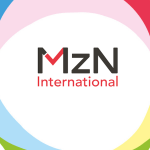In October, Ruth Faber shared a piece of research undertaken by the EU-CORD Secretariat that analysed forty-one calls for proposals released by DG INTPA between January and October 2022.
The purpose was to help EU-CORD members better plan and respond to this funding stream.
The launch webinar focussed discussion around the two most significant trends:
- The increasing use by EU Delegations of the Financial Support to Third Parties mechanism and,
- Increasing additional requirements relating to the applicant and co-applicant eligibility.
The report is not publically available but we can share our closing reflections:
Professionalism is key
- Have a good in-house understanding of the EU, its general policies, and what the EU is aiming for in your country or region.
- Invest in building coalitions and partnerships, be flexible so you can choose the right partners to build consortia.
Look at the rules for eligibility and consider that impact it has on your financial planning or how you support your local partners. - Consider the role that Third Party Support plays in your organisation, understand the methodology, how you would carry it out and what the conceptual impact is on your organisation.
- Invest in developing your writing skills – clearly articulate the programme design, and fully respond to the requirements set out in the call for proposal concept note and proposal.
- Make sure you have robust systems to manage the financial risk – from security co-financing to other financial risks (including, rules and regulations for project implementation and changes in the PRAG).
Global Europe | NDICI Call for Proposal Analysis - Consider how you stay on top of the implementation developments – use of global indicators, management systems, OPSYS, logframe encoding.
From a policy perspective:
- Is the Third Party Support mechanism effective at supporting small and grassroots organisations? Do they retain a sense of agency and self-determination (in terms of types of projects) or does it maintain a system where the EU or the Lead Applicant ‘knows best’?
- If the DG INTPA wants to see more local NGOs acting as leads, are the ‘smaller’ minimum-maximum amounts realistic?
- Are the rules of eligibility becoming overprescriptive?
- How to CSO’s ensure that grant eligibility is not just limited to the CSO and HR&D funding lines?





